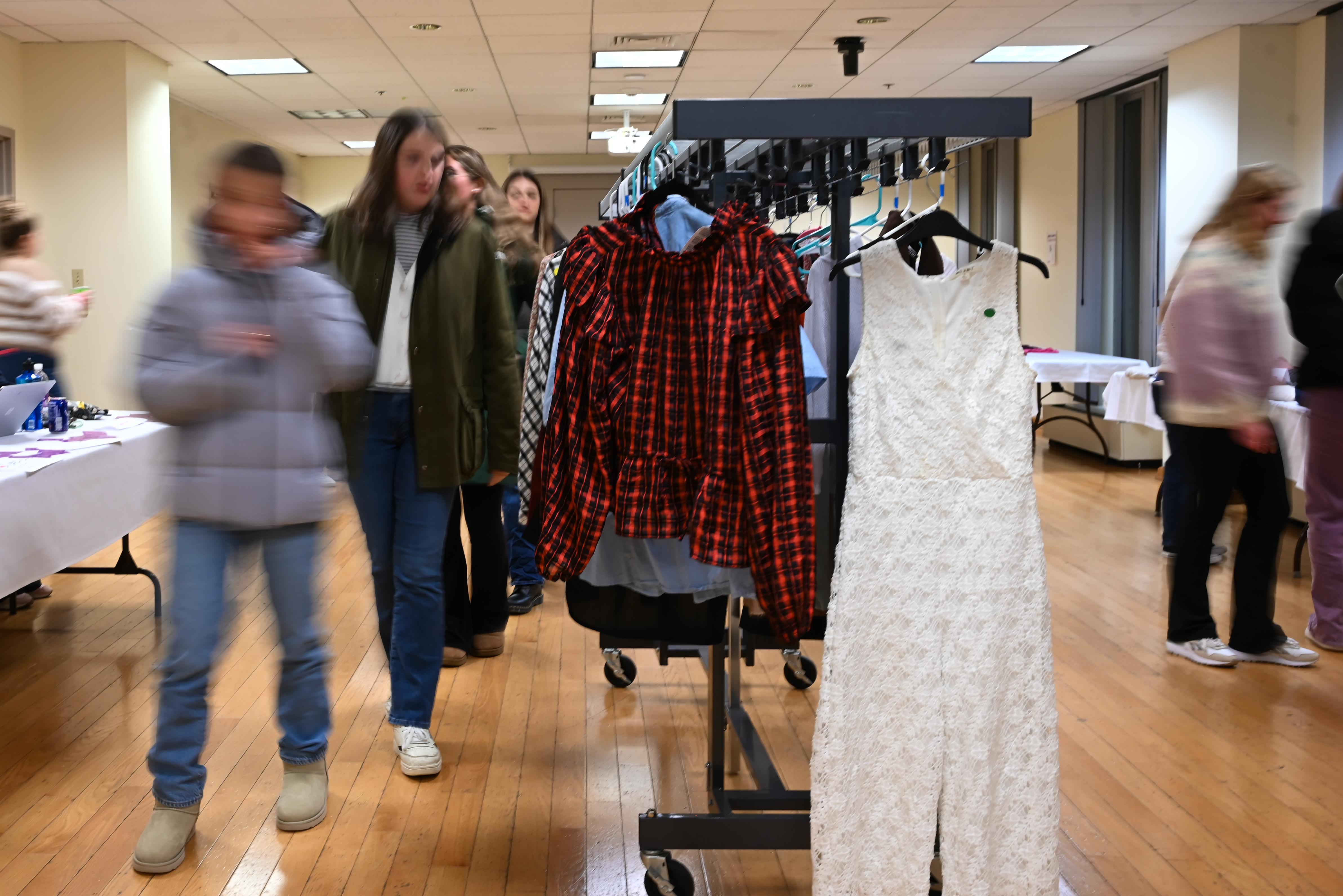Fast fashion burst onto the consumer scene in the 1990s as some companies began focusing on profits to be made by quickly manufacturing low-cost and low-quality clothing based on runway trends.
While some consumers relished this, ensuing years have revealed the practice has a significant effect on the environment — a sentiment more and more shoppers share.
“There is so much waste,” noted Alyssa Nee ’24.
Nee and fellow students, Julia Clarke ’25 and Will Sampson ’24, are working to identify ways to reduce fashion excess and educate their peers and the public on how small actions can make a difference.
“Rather than throwing something in the trash, consider whether it is still usable. Would someone else wear it? Can it be cut into rags for cleaning? We don’t need to guilt people into making changes. We’re all consumers and aren’t perfect, but once you start making incremental changes it can snowball,” Clarke said.
According to Good on You, an organization that researches and ranks environmentally and socially responsible fashion companies, worldwide the industry creates roughly 92 tons of textile waste annually. This amount is projected to increase by an additional 57 tons of waste created annually by 2030.
In the U.S,. nearly 14% of discarded clothing and shoes are recycled with roughly 12% shredded for furniture stuffing or cleaning cloths; only 1% is used to make new clothing, according to Good on You.
To improve the process, Ellis Jones, associate professor of sociology, said the basic recycling infrastructure and associated economic system needs updating so that it can handle the demand.






